Welcome to the MegaStore76.com blog! Whether you’re a budding photographer, a travel enthusiast capturing scenic views, or a parent documenting family moments, digital cameras have revolutionized how we preserve memories. Gone are the days of film rolls and darkrooms; today’s digital cameras offer unparalleled convenience, quality, and creativity. In this post, we’ll dive deep into the fascinating world of digital cameras, exploring their history, types, key features, and tips for selecting the perfect one for your needs. Let’s get started!
The Evolution of Digital Cameras
Digital cameras have come a long way since their inception in the late 20th century. The first true digital camera was invented in 1975 by Kodak engineer Steven Sasson, but it wasn’t until the 1990s that they became commercially viable. Early models were bulky, expensive, and offered low resolution—think 0.01 megapixels! Fast forward to today, and digital cameras boast resolutions in the tens of megapixels, advanced autofocus systems, and even 8K video recording.
The shift from analog film to digital sensors marked a pivotal change. Instead of capturing images on light-sensitive film, digital cameras use electronic sensors (like CCD or CMOS) to convert light into digital data. This allows for instant previews on LCD screens, easy editing, and unlimited shots without the cost of developing film. As technology advanced, features like image stabilization, wireless connectivity, and AI-enhanced processing have made digital cameras more user-friendly and powerful than ever.
Types of Digital Cameras: Finding Your Fit
Not all digital cameras are created equal. Depending on your photography style and budget, there’s a type suited just for you. Here’s a breakdown of the most popular categories:
Compact Point-and-Shoot Cameras
These are the everyday heroes of photography—small, lightweight, and easy to use. Ideal for beginners or casual users, compact cameras feature automatic settings that handle exposure, focus, and flash for you. They often come with built-in zoom lenses and are perfect for vacations or quick snapshots. While they may not match the image quality of higher-end models, modern compacts offer impressive low-light performance and Full HD video.
DSLR Cameras
Digital Single-Lens Reflex (DSLR) cameras are favorites among professionals and serious hobbyists. What sets them apart is the optical viewfinder, which uses a mirror to reflect the scene directly from the lens. This provides a true-to-life preview and allows for interchangeable lenses, giving you flexibility for everything from wide-angle landscapes to telephoto wildlife shots. DSLRs excel in speed, with fast burst modes for action photography, and they handle low-light conditions superbly thanks to larger sensors.
Mirrorless Cameras
The rising stars of the digital camera world, mirrorless models ditch the bulky mirror system of DSLRs for a more compact design. They use electronic viewfinders or rear screens for previews, resulting in lighter bodies without sacrificing quality. Mirrorless cameras are known for their silent shooting, real-time exposure previews, and advanced video capabilities, making them popular for vloggers and filmmakers. Brands continue to innovate here, with features like in-body stabilization and eye-tracking autofocus.
Action and Adventure Cameras
For thrill-seekers, action cameras like those designed for extreme sports are rugged, waterproof, and mountable. They capture wide-angle footage in high resolution, often with stabilization to smooth out bumpy rides. These are great for underwater photography, biking trails, or skydiving, and many support 4K video at high frame rates for slow-motion effects.
Bridge Cameras
Bridging the gap between compacts and DSLRs, these cameras offer powerful zoom lenses (up to 100x optical zoom) in a single, non-interchangeable body. They’re versatile for wildlife or sports photography without the need for multiple lenses, and they include manual controls for creative experimentation.
Key Features to Consider in Digital Cameras
When shopping for a digital camera, it’s easy to get overwhelmed by specs. Focus on these essential features to make an informed choice:
- Sensor Size and Megapixels: The sensor is the heart of the camera. Larger sensors (like full-frame or APS-C) capture more light, leading to better image quality, especially in dim environments. Megapixels determine resolution—12-24 MP is sufficient for most users, while pros might opt for 50+ MP for large prints.
- Lens and Zoom: Fixed-lens cameras have built-in optics, but interchangeable systems allow customization. Optical zoom is preferable over digital zoom, as it maintains quality when magnifying distant subjects.
- Autofocus and Speed: Look for phase-detection autofocus for quick, accurate focusing. Burst mode (frames per second) is crucial for capturing fast-moving action, like sports or wildlife.
- Video Capabilities: Many digital cameras now rival dedicated camcorders. Check for 4K resolution, frame rates, and stabilization to ensure smooth footage.
- Connectivity and Battery Life: Wi-Fi, Bluetooth, and NFC make transferring photos to your phone or computer a breeze. Long battery life is essential for all-day shoots—some models offer USB charging for convenience.
- Additional Perks: Weather-sealing for outdoor use, touchscreens for intuitive controls, and built-in filters or modes (like panorama or HDR) add fun and functionality.
Advantages of Digital Cameras Over Smartphones
While smartphones have impressive cameras, dedicated digital cameras still hold the edge in several areas. They offer superior ergonomics with physical buttons and grips for comfortable handling. Optical zooms provide clearer distant shots without pixelation, and larger sensors deliver richer colors and less noise in low light. For professionals, raw file support allows extensive post-processing, something limited on most phones. Plus, digital cameras encourage mindful photography, free from distractions like notifications.
Tips for Choosing and Using Your Digital Camera
Ready to pick your perfect camera? Here are some practical tips:
- Define Your Needs: Are you shooting portraits, landscapes, or videos? Set a budget and prioritize features accordingly.
- Read Reviews and Compare: Look at user feedback on image quality, build, and ease of use. Test models in-store if possible.
- Accessories Matter: Invest in extras like tripods, extra batteries, memory cards, and protective cases to enhance your experience.
- Learn the Basics: Experiment with manual modes to understand aperture, shutter speed, and ISO. This unlocks creative potential.
- Maintenance is Key: Keep your lens clean, store in a dry place, and update firmware for the latest improvements.
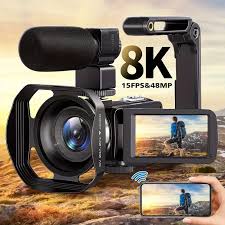
Best Digital Cameras Today:
1. FLATIC Digital Camera with WiFi, 5K 64MP Cameras for Photography.

The FLATIC Digital Camera with WiFi and a powerful 64MP sensor delivers impressive performance for photography enthusiasts seeking high resolution and convenience in one package. Designed with both casual and semi-professional users in mind, this camera balances modern features with user-friendly functionality.
At the heart of the FLATIC camera is its 64-megapixel image sensor, capable of capturing rich, detailed photos with vibrant color accuracy. Whether you’re shooting landscapes, portraits, or everyday scenes, the image clarity stands out — especially at this price point. The 5K video recording is equally noteworthy, offering sharp, fluid footage ideal for content creators and vloggers.
One of the most appealing features is its built-in WiFi connectivity, which makes transferring files to a smartphone or tablet seamless. This is perfect for users who want to share their work instantly on social media or back up photos on the go without relying on cables.
The camera’s design is compact and lightweight, making it ideal for travel and outdoor shooting. It includes intuitive controls, a large LCD display, and options for manual settings, giving more control to those who want to refine their shots.
Pros:
- High-resolution 64MP image sensor
- Smooth 5K video recording capabilities
- Built-in WiFi for quick sharing and remote control
- Lightweight and portable design
- Great value for the features included
Cons:
- Low-light performance could be improved
- Not weather-sealed, so caution is needed in tough conditions
- Autofocus is decent, but not as fast as high-end models
Overall, the FLATIC Digital Camera is an excellent choice for beginners and intermediate photographers looking for high-quality images and advanced features without breaking the bank. It’s a reliable companion for travel, content creation, and everyday photography.
2. Upgraded 5K Dual Screen Digital Camera,80MP Vlog Photography.
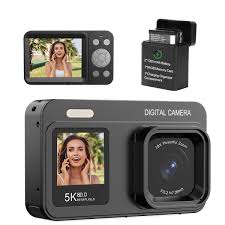
The Upgraded 5K Dual Screen Digital Camera with an impressive 80MP sensor is a solid pick for vloggers, travelers, and content creators seeking high-quality visuals in a compact, easy-to-use package. This camera blends style, functionality, and innovation to support both photography and video recording with ease.
At the core of this camera is its 80-megapixel resolution, delivering sharp and vibrant photos that capture every detail. Paired with 5K video recording, it ensures crisp footage with smooth motion — perfect for YouTube vlogs, travel diaries, and casual filmmaking.
The standout feature is the dual screen design: a front-facing screen for selfies and vlogging, and a rear screen for traditional shooting. This makes it incredibly user-friendly for solo creators who need to frame themselves without guesswork. Switching between screens is seamless, and the overall interface is intuitive even for beginners.
Lightweight and compact, this camera is built for portability without sacrificing quality. It also includes handy features like face detection, anti-shake, and time-lapse, giving users creative flexibility. The rechargeable battery and SD card support ensure long shooting sessions with plenty of storage.
Pros:
- Ultra-high 80MP resolution for rich photo detail
- 5K video for sharp, clear recordings
- Dual screens perfect for vlogging and selfies
- Easy-to-use controls and compact build
- Ideal for beginners and on-the-go creators
Cons:
- Low-light performance is average
- Limited zoom range compared to professional cameras
- May lack advanced manual settings for experienced users
Overall, the Upgraded 5K Dual Screen Digital Camera offers excellent value for aspiring content creators and casual photographers. It combines high resolution, smart design, and ease of use — making it a great entry point into the world of vlogging and digital photography.
3. Yatao Digital Cameras for Photography and Vlogging.
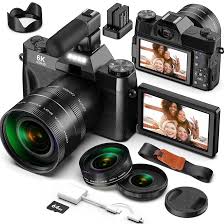
The Yatao Digital Camera is a versatile and beginner-friendly device designed for photography lovers and vloggers who want quality results without the bulk or complexity of professional equipment. It strikes a balance between affordability and functionality, making it a great choice for casual users and content creators just getting started.
This camera features high-resolution imaging, capable of capturing detailed and vibrant photos, suitable for everything from everyday snapshots to travel and lifestyle photography. For video content, it supports smooth HD or 4K recording (depending on the model), giving vloggers clean, stable footage with natural color tones.
One of its standout qualities is the compact and lightweight design, which makes it highly portable and ideal for on-the-go shooting. It typically includes a flip screen or front-facing display, a valuable tool for vloggers who want to stay in frame while recording themselves.
User-friendly controls, built-in features like face detection, anti-shake, and scene modes, and simple connectivity options such as USB or SD card support, round out the package. Some models may also offer WiFi functionality for quick file transfers and remote control from a smartphone.
Pros:
- Great for beginners and casual users
- Good photo and video quality for the price
- Compact, lightweight, and travel-friendly
- Ideal for vlogging with front display options
- Simple and intuitive operation
Cons:
- Not suited for advanced photography needs
- May struggle in low-light settings
- Autofocus can be slower than premium models
Overall, the Yatao Digital Camera is a dependable, budget-conscious option for users who want to explore photography and vlogging with a reliable, easy-to-use device. It’s perfect for social media content, travel videos, and everyday moments.
4. 8K Digital Camera, 88MP Cameras for Photography with WiFi & Touch Screen.
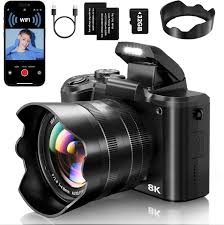
The 8K Digital Camera with an 88MP sensor, WiFi, and a touch screen display offers an impressive combination of power, convenience, and modern features tailored for both photography enthusiasts and content creators. With ultra-high resolution and smart connectivity, this camera is built to deliver sharp, professional-grade results in a compact form.
Its standout feature is the 88-megapixel image sensor, which captures incredibly detailed and vivid stills. Whether you’re shooting portraits, landscapes, or product photography, the image clarity and color depth are remarkable for a camera in this category. On the video side, the 8K recording capability gives creators ultra-crisp footage, ideal for cinematic vlogs, YouTube content, or high-resolution video projects.
The inclusion of a responsive touch screen makes navigating settings and reviewing media fast and intuitive. It’s especially helpful for adjusting focus points, accessing features quickly, and improving the overall shooting experience. Paired with WiFi connectivity, the camera allows for seamless file transfers, remote shooting, and instant sharing to smart devices.
Its design is compact yet premium, with a solid build quality and ergonomic feel. Other useful features may include face detection, anti-shake, time-lapse, and slow-motion options, offering creative flexibility for a wide range of users.
Pros:
- Exceptional 88MP photo resolution
- Stunning 8K video capability
- Touch screen for intuitive control
- WiFi for quick sharing and remote access
- Compact, stylish, and travel-ready design
Cons:
- Battery life may be limited during 8K recording
- Low-light performance could use enhancement
- Autofocus may not match professional DSLR speeds
Overall, this 8K Digital Camera with WiFi and touch screen functionality is a powerful tool for creators who want advanced features without the complexity of high-end gear. It’s ideal for travel, vlogging, content creation, and detailed photography projects where quality and convenience matter most.
5. Video Camera Camcorder Digital YouTube Vlogging Camera.
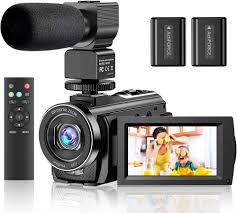
The Video Camera Camcorder Digital YouTube Vlogging Camera is a practical and user-friendly device designed for aspiring vloggers, content creators, and casual videographers. Built to meet the basic needs of online video production, this camera combines essential features with portability and ease of use.
It typically offers Full HD or 4K video resolution, delivering decent video quality suitable for YouTube, TikTok, and social media platforms. While not designed for professional filmmaking, it handles daily vlogging, tutorials, and indoor/outdoor shoots quite well for its price range.
One of its standout features is the flip-out screen, which makes self-recording easier by allowing you to see yourself while filming. This is particularly useful for solo content creators who want to ensure proper framing and focus. Some models also include a built-in microphone or an external mic input, which improves audio quality—a major plus for vlogging.
The camcorder is lightweight and compact, making it easy to carry around for travel or everyday recording. It often includes handy functions like pause recording, time-lapse, slow motion, and face detection, which add creative flexibility to your videos.
Pros:
- Ideal for beginner vloggers and YouTube creators
- Flip screen for easy selfie recording
- Lightweight and portable design
- Simple operation with useful features
- Budget-friendly entry into video creation
Cons:
- Low-light performance may be limited
- Video stabilization is basic
- Build quality may feel more plastic than premium
Overall, the Video Camera Camcorder Digital YouTube Vlogging Camera is a smart entry-level option for creators who want to start filming without investing in expensive gear. It’s a reliable companion for daily vlogs, video blogs, and casual content, offering good value and solid performance for newcomers.
6. Logitech C920x HD Pro Webcam, Full HD 1080p/30fps Video, Clear Audio, HD Light Correction, PC Camera Webcam, Works with Skype, Zoom.
The Logitech C920x HD Pro Webcam is a top-tier choice for users seeking high-quality video conferencing, streaming, or content creation. With Full HD 1080p resolution, sharp audio pickup, and intelligent lighting adjustment, it stands out as one of the most reliable and widely used webcams in its class.
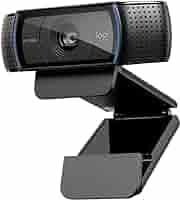
Video Quality:
At the heart of the C920x is its 1080p video at 30fps, delivering crisp and vibrant visuals. Whether you’re in a Zoom meeting, live streaming, or recording content for YouTube, the clarity and smooth motion elevate your presentation. The sharp autofocus keeps you in focus even if you move slightly, and the wide 78-degree field of view captures enough background without distortion.
Audio Performance:
Built-in dual stereo microphones ensure clear and natural voice pickup. The audio is well-balanced, minimizing background noise and maintaining clarity for professional-sounding calls or recordings—especially useful if you’re not using an external mic.
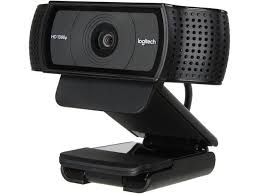
Light Correction:
The webcam’s HD light correction feature is one of its strongest assets. It automatically adjusts to different lighting conditions, helping you look your best even in low-light environments or harsh backlighting. This is especially helpful for remote work, where perfect lighting isn’t always available.
Build & Compatibility:
The C920x has a solid, professional build and comes with a flexible clip that securely mounts to monitors or laptops. It’s also tripod-compatible for more stable setups. In terms of software compatibility, it works flawlessly with popular platforms like Skype, Zoom, Microsoft Teams, and OBS, making it a plug-and-play solution for most users on Windows and macOS.
Final Verdict:
The Logitech C920x HD Pro Webcam is a proven performer that delivers high-definition video, dependable audio, and smart features like light correction and autofocus. Whether you’re working from home, streaming, or creating content, this webcam offers the quality and reliability that both professionals and casual users can count on.
7. Nikon Z6III (Best Full-Frame Mirrorless Camera).
Key Specs:
- Sensor: 24.5MP partially stacked BSI CMOS
- Autofocus: 3D Tracking with subject detection
- Continuous Shooting: Up to 20 fps (RAW)
- Video: 6K/60p RAW, 4K/120p (cropped)
- ISO Range: 50–204,800 (extended)
- Stabilization: 5-axis IBIS (up to 8 stops)
- Weight: 1.5 lbs
- Connectivity: Wi-Fi, Bluetooth, USB-C, HDMI
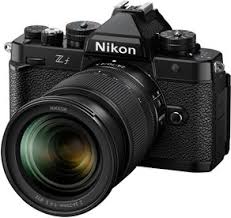
Review:
The Nikon Z6III stands out as a top-tier full-frame mirrorless camera, excelling as a hybrid for both stills and video. Its partially stacked sensor delivers exceptional image quality with minimal rolling shutter distortion, making it ideal for fast-moving subjects like sports or wildlife. The autofocus system is robust, with reliable subject tracking for humans, animals, and vehicles, though it’s slightly less snappy than competitors like the Canon EOS R6 Mark II. The camera’s 20 fps burst rate in RAW and 6K internal RAW video recording make it a powerhouse for professionals and enthusiasts alike. Ergonomically, it features a bright, high-resolution viewfinder and a weather-sealed magnesium body, perfect for rugged outdoor shoots. However, its battery life is mediocre, lasting around 390 shots per CIPA standards, which may require spare batteries for extended sessions. Compared to the Sony α7 IV, the Nikon offers faster burst rates and RAW video, but Sony’s lens ecosystem is more extensive. For those prioritizing versatility and value in a full-frame system, the Z6III is hard to beat.
Pros:
- Outstanding hybrid performance for photo and video
- Excellent low-light image quality
- Durable, weather-sealed build
- High-resolution EVF and effective stabilization
Cons: - Battery life could be better
- Nikon’s lens lineup is less extensive than Sony or Canon
Best For: Hybrid shooters, travel photographers, and enthusiasts seeking a do-it-all camera.
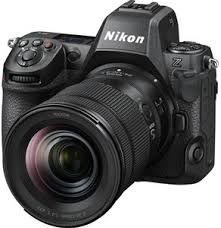
8. Fujifilm X100VI (Best Compact Camera).
Type: Fixed-Lens Compact
Key Specs:
- Sensor: 40.2MP APS-C X-Trans CMOS 5 HR
- Lens: Fixed 23mm f/2.0 (35mm equivalent)
- Autofocus: AI-powered subject detection (humans, animals, vehicles)
- Continuous Shooting: 20 fps (electronic shutter)
- Video: 6.2K/30p, 4K/60p, 10-bit F-Log
- ISO Range: 125–51,200 (extended)
- Stabilization: 5-axis IBIS (up to 6 stops)
- Weight: 1.2 lbs
- Connectivity: Wi-Fi, Bluetooth, USB-C
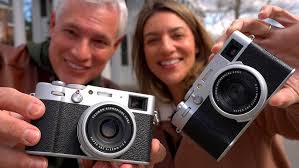
Review:
The Fujifilm X100VI is a dream for street and travel photographers, combining retro aesthetics with cutting-edge technology. Its 40.2MP APS-C sensor, the highest-resolution in its class, captures stunningly detailed images, perfect for cropping or large prints. The fixed 23mm f/2.0 lens is sharp and versatile, with optional wide and telephoto converters for added flexibility. Fujifilm’s Film Simulation modes deliver vibrant, film-like JPEGs straight out of the camera, reducing post-processing needs. The hybrid viewfinder (optical and electronic) is a unique feature, offering both traditional and modern shooting experiences. Autofocus has improved over its predecessor, the X100V, with reliable subject detection for dynamic scenes. However, the single memory card slot and high price point are drawbacks, especially compared to interchangeable-lens options like the Fujifilm X-T5. The battery lasts for about 450 shots, adequate for a day’s casual shooting but limiting for video. Its slim, lightweight design makes it a joy to carry, though it lacks full weather protection without accessories.
Pros:
- Exceptional image quality with high-resolution sensor
- Stylish, portable design with intuitive controls
- Versatile hybrid viewfinder
- Rich JPEG output with Film Simulations
Cons: - Expensive for a fixed-lens camera
- Single card slot limits professional use
Best For: Street photographers, travel enthusiasts, and those who love compact, high-quality cameras.
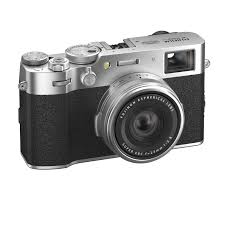
9. Panasonic Lumix GH7 (Best for Video).

Type: Micro Four Thirds Mirrorless
Key Specs:
- Sensor: 25.2MP MFT CMOS
- Autofocus: Phase-detect with subject recognition
- Continuous Shooting: 14 fps (mechanical shutter)
- Video: 5.8K/30p open gate, 4K/120p, 1080p/300p, ProRes RAW
- ISO Range: 100–25,600 (extended)
- Stabilization: 7.5-stop IBIS
- Weight: 1.8 lbs
- Connectivity: Wi-Fi, Bluetooth, USB-C, HDMI, CFexpress slot
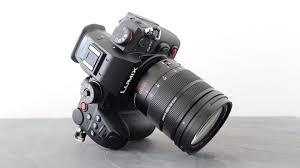
Review:
The Panasonic Lumix GH7 is a video-centric powerhouse, tailored for filmmakers and advanced videographers. Its Micro Four Thirds sensor, while smaller than full-frame, delivers impressive dynamic range and supports a wide array of video formats, including 5.8K open gate, 4K at 120 fps, and high-frame-rate 1080p for slow-motion. Features like internal ProRes RAW, 10-bit 4:2:2, and V-Log recording, combined with a built-in fan for unlimited recording, make it a professional-grade tool. The phase-detect autofocus is a significant upgrade over the GH6, offering reliable subject tracking, though it’s not as refined as full-frame competitors. For stills, it produces sharp 25MP images, suitable for most genres, but its low-light performance lags behind larger sensors. The camera’s bulky design, due to the cooling system, is a trade-off for its video prowess, and battery life is average, lasting around 380 shots. Compared to the Panasonic Lumix S5 II, the GH7 offers more advanced video features, but its smaller sensor and pricier lenses may deter some.
Pros:
- Unmatched video features for the price
- Excellent stabilization for handheld shooting
- Robust build with cooling for long recordings
- Versatile lens ecosystem
Cons: - Smaller sensor limits low-light performance
- Bulkier than other MFT cameras
Best For: Videographers, filmmakers, and hybrid shooters prioritizing video quality.
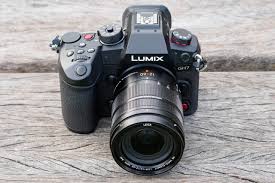
10. Fujifilm X-T5 (Best APS-C Camera)

Type: APS-C Mirrorless
Key Specs:
- Sensor: 40.2MP APS-C X-Trans CMOS 5 HR
- Autofocus: Subject detection (humans, animals, vehicles)
- Continuous Shooting: 15 fps (mechanical), 20 fps (electronic)
- Video: 6.2K/30p, 4K/60p, 10-bit F-Log
- ISO Range: 125–51,200 (extended)
- Stabilization: 7-stop IBIS
- Weight: 1.3 lbs
- Connectivity: Wi-Fi, Bluetooth, USB-C

Review:
The Fujifilm X-T5 is a stellar choice for enthusiast photographers seeking a compact, high-resolution camera. Its 40.2MP APS-C sensor, shared with the X100VI, delivers exceptional detail, rivaling some full-frame models for stills. The retro-inspired design with tactile dials is both functional and charming, appealing to those who enjoy hands-on control. Autofocus is fast and accurate, with subject detection for wildlife and street photography, though the buffer fills quickly at full resolution. The 7-stop IBIS ensures sharp handheld shots, even in low light, and the three-way tilting screen is versatile for creative angles. Video capabilities are impressive, with 6.2K recording and ProRes RAW support externally, though it’s less video-focused than the Panasonic GH7. The X-T5’s weather-sealed body is durable, and Fujifilm’s X-mount lens system offers a wide range of affordable optics. Battery life supports about 580 shots, better than some competitors, but the lack of a CFexpress slot limits high-speed performance. Compared to the Fujifilm X-H2, the X-T5 is more portable but misses some pro-level features like 8K video.
Pros:
- High-resolution sensor for detailed images
- Retro design with intuitive controls
- Strong autofocus and stabilization
- Affordable lens ecosystem
Cons: - Limited buffer for continuous shooting
- Not as video-focused as some rivals
Best For: Enthusiast photographers, street shooters, and those seeking a balance of portability and performance.

11. Canon EOS R10 (Best Entry-Level Camera).
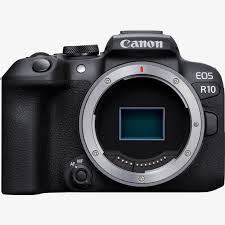
Type: APS-C Mirrorless
Key Specs:
- Sensor: 24.2MP APS-C CMOS
- Autofocus: Dual Pixel AF with subject tracking
- Continuous Shooting: 15 fps (mechanical), 23 fps (electronic)
- Video: 4K/30p (uncropped), 4K/60p (cropped)
- ISO Range: 100–32,000 (extended)
- Stabilization: None (lens-based)
- Weight: 0.9 lbs
- Connectivity: Wi-Fi, Bluetooth, USB-C
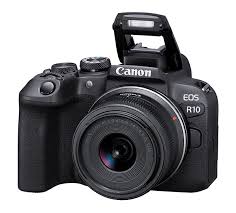
Review:
The Canon EOS R10 is a fantastic entry-level mirrorless camera, offering excellent value for beginners and budget-conscious shooters. Its 24.2MP APS-C sensor produces sharp, vibrant images, and Canon’s Dual Pixel autofocus is highly effective, tracking subjects like faces and eyes with ease. The 15 fps burst rate is impressive for its price, making it suitable for sports or wildlife photography. Video performance is solid, with uncropped 4K/30p and 10-bit HDR PQ recording, though 4K/60p has a heavy crop and noticeable rolling shutter. The lack of in-body stabilization is a drawback, requiring stabilized lenses for handheld shooting. Its lightweight, compact body and intuitive interface make it beginner-friendly, and the RF-mount system offers an upgrade path to full-frame models like the EOS R6 Mark II. Battery life is decent at 440 shots, but the lack of weather-sealing limits outdoor use in harsh conditions. Compared to the Nikon Z50II, the R10’s autofocus is more consistent, but it misses out on IBIS and weather protection.
Pros:
- Affordable with strong performance
- Excellent autofocus for the price
- Lightweight and easy to use
- Good for both stills and video
Cons: - No in-body stabilization
- Limited native RF-S lenses
Best For: Beginners, vloggers, and budget-conscious photographers.
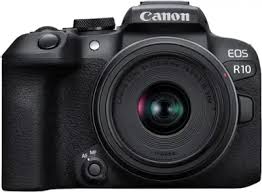
12. DJI Osmo Action 5 Pro (Best Action Camera).
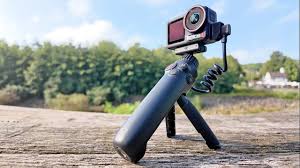
Type: Action Camera
Key Specs:
- Sensor: 1/1.3-inch CMOS (40MP)
- Autofocus: Basic contrast-based
- Continuous Shooting: Not specified
- Video: 4K/120p, 10-bit D-Log M
- ISO Range: 100–12,800
- Stabilization: Electronic (RockSteady 3.0)
- Weight: 0.3 lbs
- Connectivity: Wi-Fi, Bluetooth, USB-C
- Waterproof: Up to 65.6 ft without case
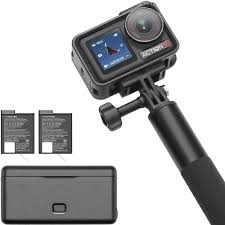
Review:
The DJI Osmo Action 5 Pro is a top-tier action camera, rivaling GoPro with its compact design and impressive video capabilities. Its 1/1.3-inch sensor captures 4K/120p video with 10-bit D-Log M for enhanced color grading, and the class-leading battery life supports long recording sessions without overheating. The RockSteady 3.0 stabilization delivers smooth footage, even during intense activities like mountain biking or diving. Dual touchscreens enhance usability, and the camera is waterproof to 65.6 feet, making it ideal for underwater photography. However, its low-light performance lags behind smartphones, and the companion app is less polished than GoPro’s. For stills, the 40MP sensor produces decent images for an action camera, but it’s not a primary photography tool. Compared to the GoPro Hero13 Black, the DJI is more affordable and offers better battery life, but its autofocus is less advanced.
Pros:
- Excellent video quality and stabilization
- Long battery life and no overheating
- Affordable for an action camera
- Rugged, waterproof design
Cons: - Weak low-light performance
- App functionality needs improvement
Best For: Adventure enthusiasts, vloggers, and underwater photographers.
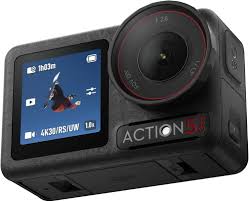
13. Canon EOS 5D Mark IV (Best DSLR)
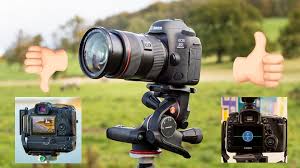
Type: Full-Frame DSLR
Key Specs:
- Sensor: 30.4MP Full-Frame CMOS
- Autofocus: 61-point AF with Dual Pixel AF
- Continuous Shooting: 7 fps
- Video: 4K/30p, Full HD/60p
- ISO Range: 100–32,000 (extended)
- Stabilization: None (lens-based)
- Weight: 1.8 lbs
- Connectivity: Wi-Fi, NFC, USB, HDMI

Review:
The Canon EOS 5D Mark IV remains a workhorse DSLR for professionals, particularly for wedding and landscape photography. Its 30.4MP full-frame sensor delivers excellent dynamic range and color accuracy, with Canon’s signature color science shining in both JPEG and RAW files. The 61-point autofocus system is reliable for stills, and Dual Pixel AF ensures smooth focusing in live view and video. The 4K/30p video is dated compared to modern mirrorless cameras, with a 1.64x crop and no 10-bit recording, but Full HD quality is solid. The optical viewfinder and robust, weather-sealed body appeal to traditionalists, and the deep grip enhances handling. Battery life is a strength, lasting up to 900 shots, far surpassing most mirrorless models. However, its slower 7 fps burst rate and lack of IBIS make it less competitive for action photography. Compared to the Nikon D850, the 5D Mark IV has better live-view AF but lower resolution (30.4MP vs. 45.7MP).
Pros:
- Superb image quality and color rendition
- Durable, weather-sealed build
- Long battery life
- Reliable autofocus for stills
Cons: - Limited video features compared to mirrorless
- No in-body stabilization
Best For: Wedding photographers, portrait shooters, and DSLR loyalists.
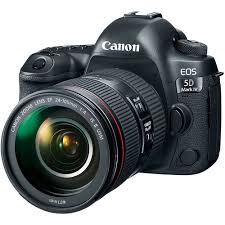
Finally
Digital cameras are redefining how we capture and share our world. With intelligent features like AI scene detection, face tracking, wireless connectivity, and ultra-high-resolution capabilities, these cameras offer a powerful blend of convenience and performance. Whether you’re a seasoned photographer, an aspiring content creator, or someone who simply wants better memories in sharper detail, smart cameras provide the tools to elevate your visual storytelling. As technology continues to evolve, investing in a smart camera means you’re not just keeping up — you’re staying ahead.

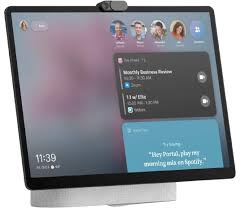

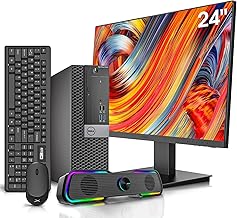
[…] See Also Smart Photo And Video […]